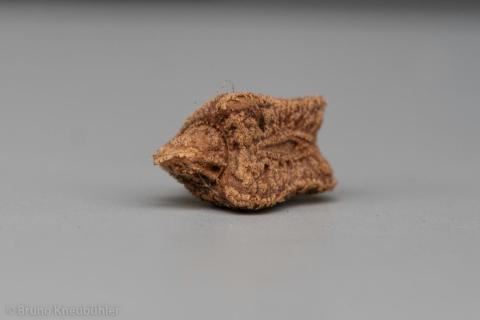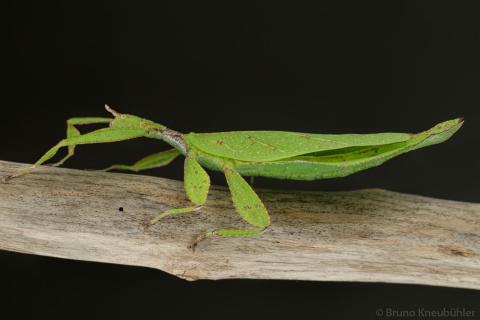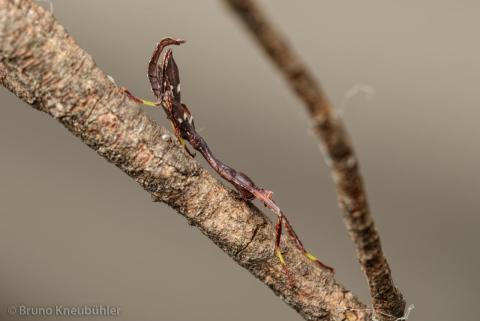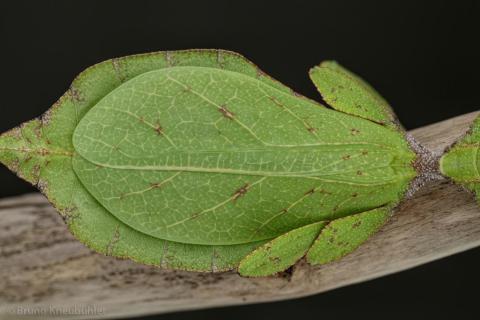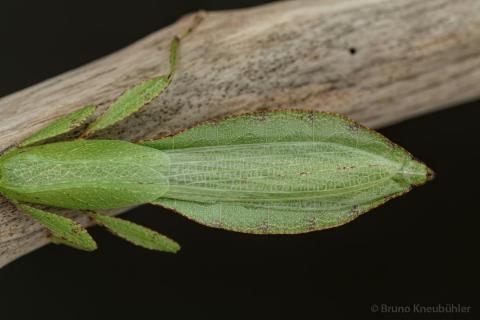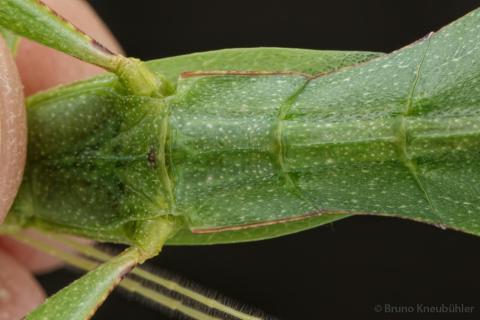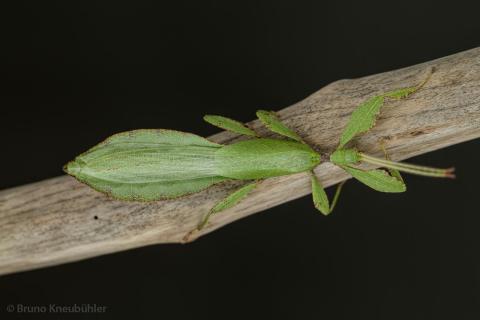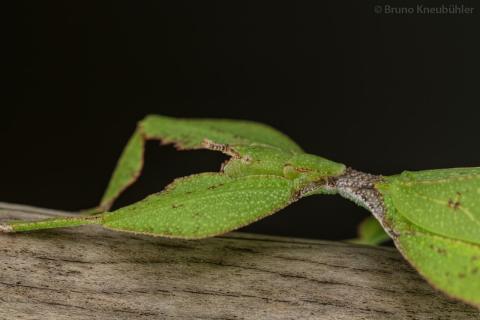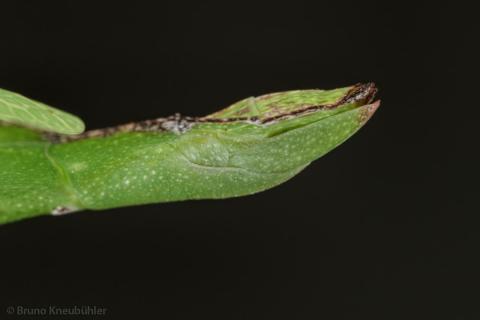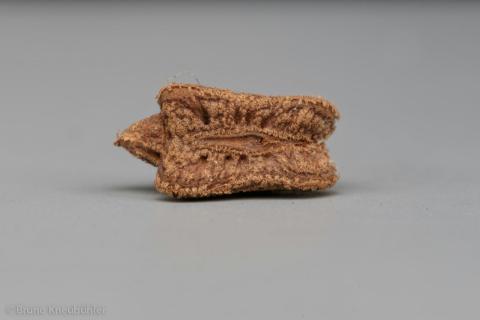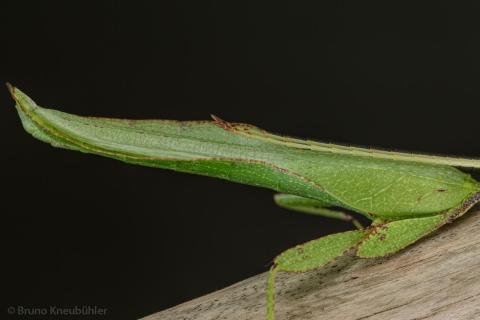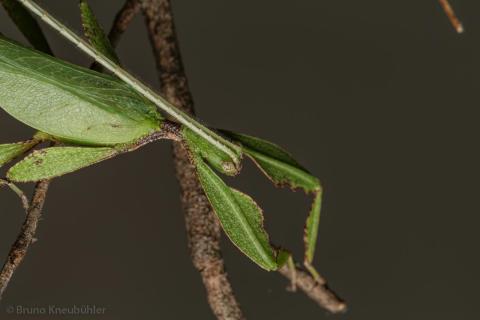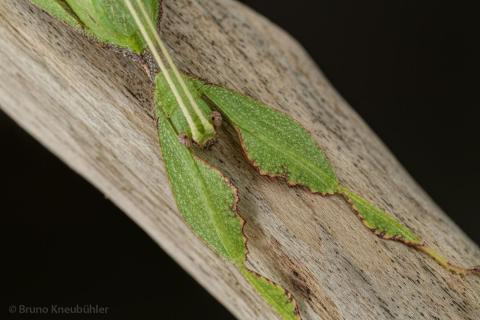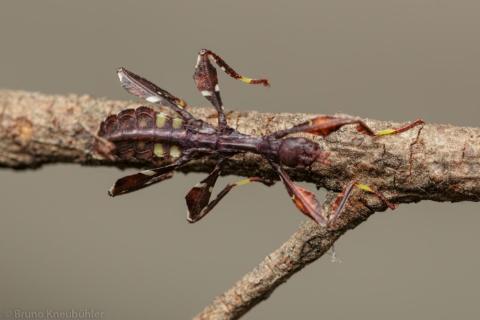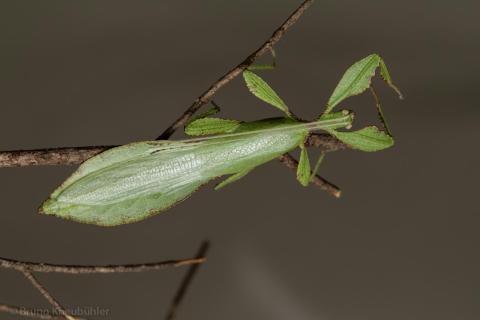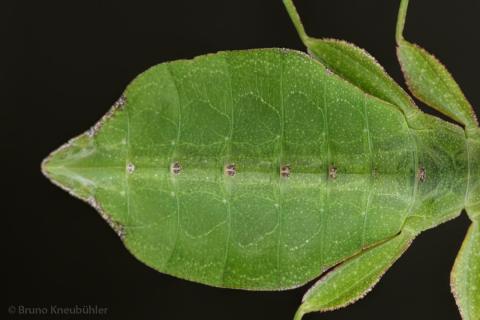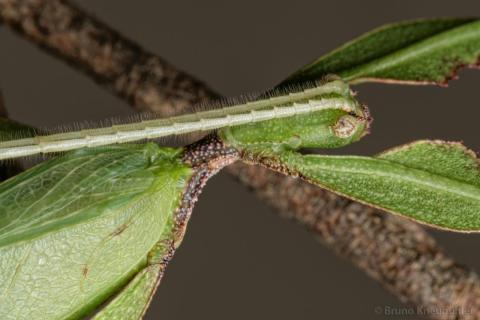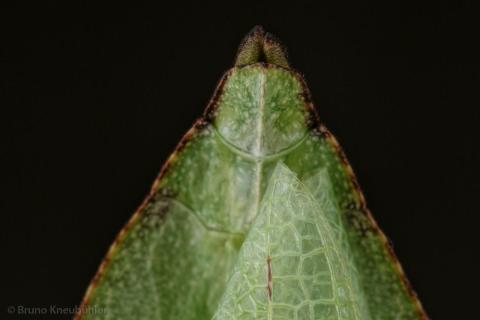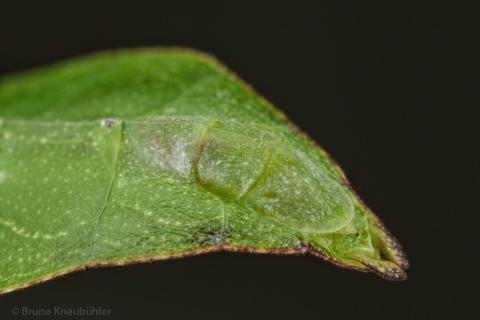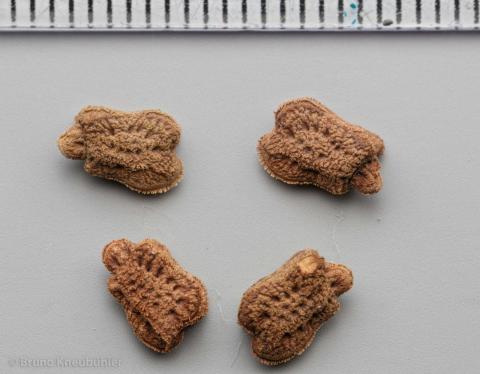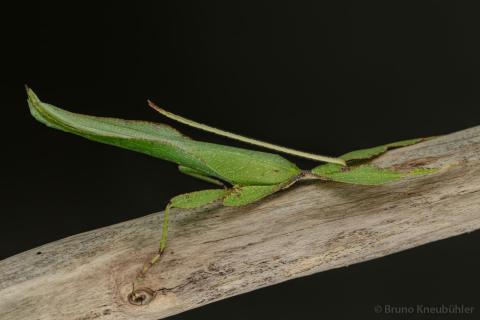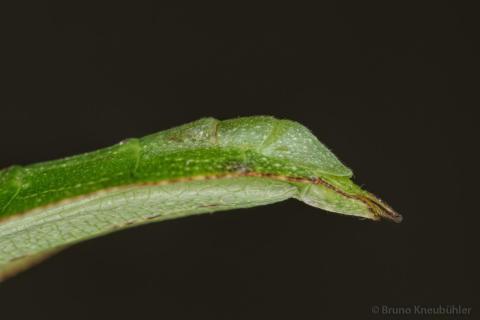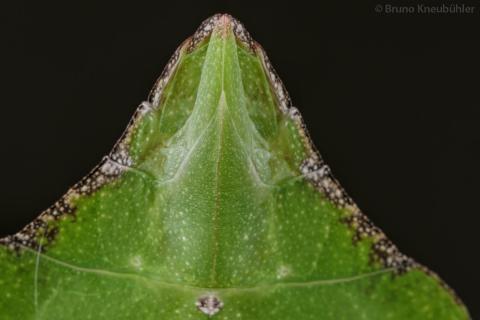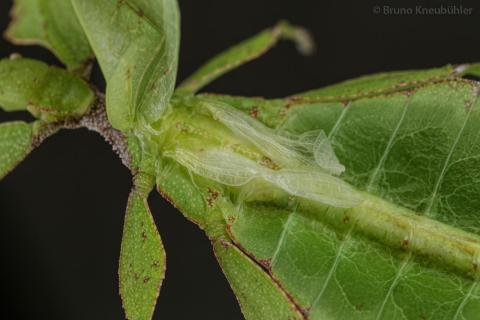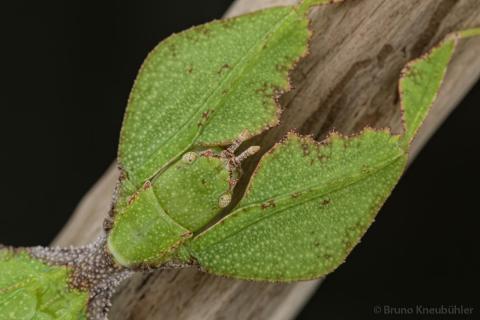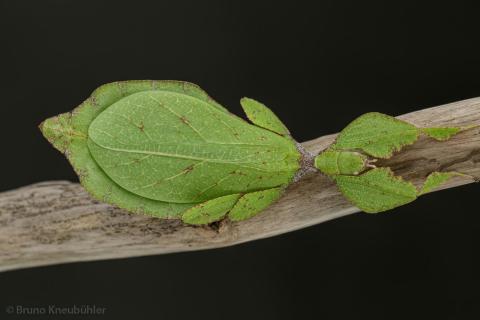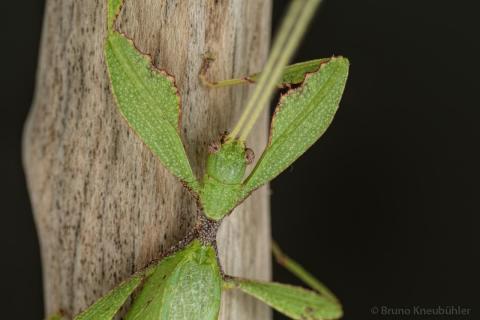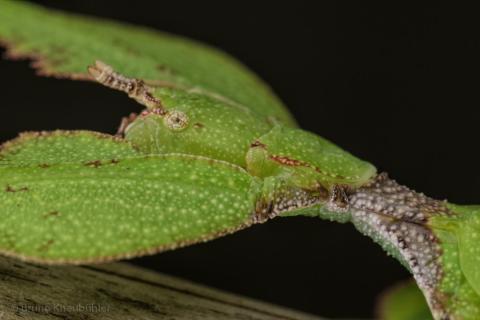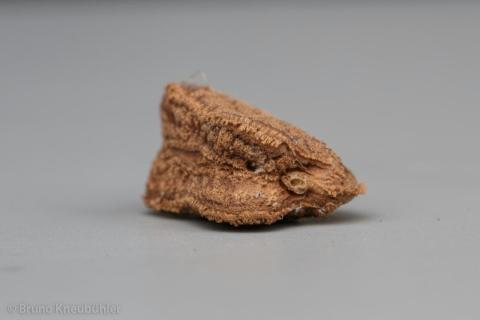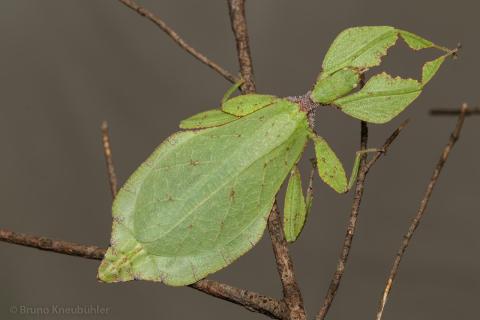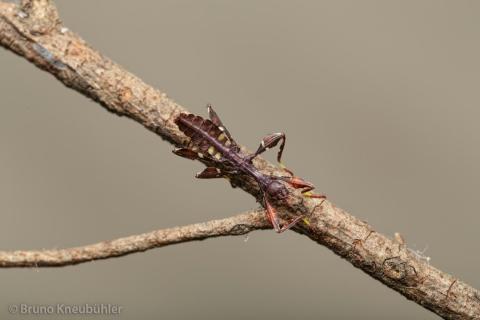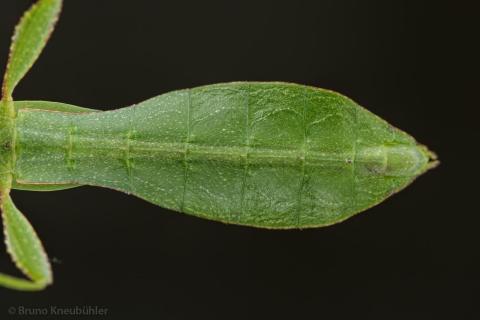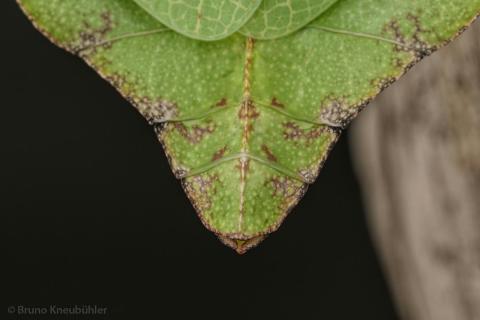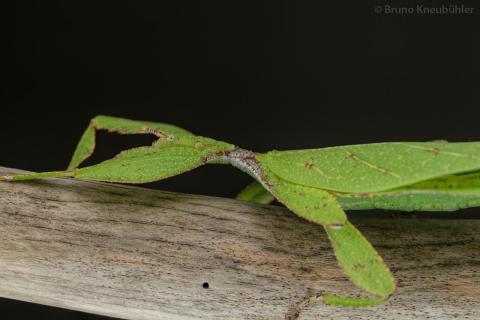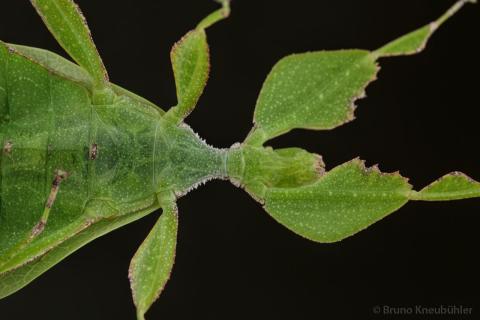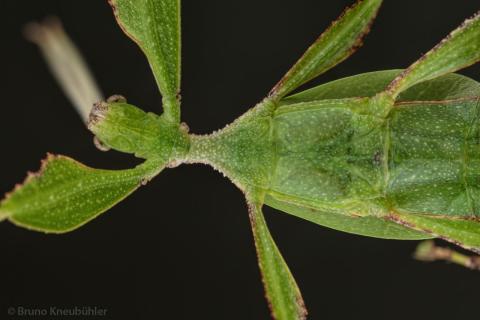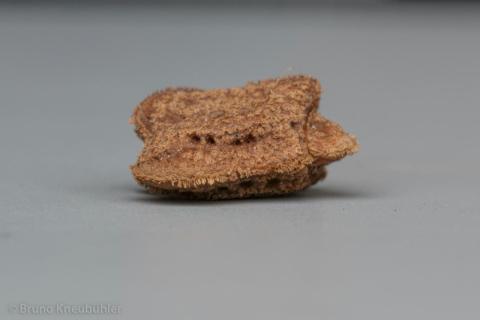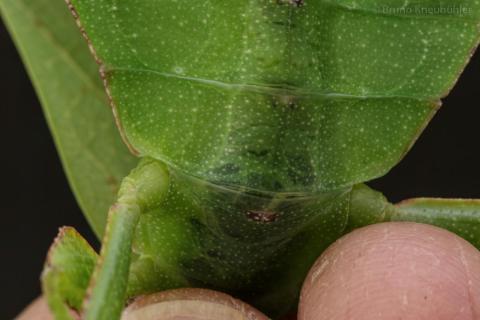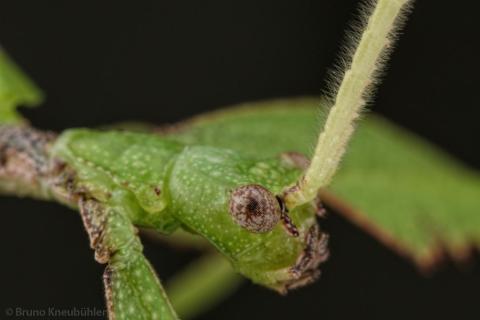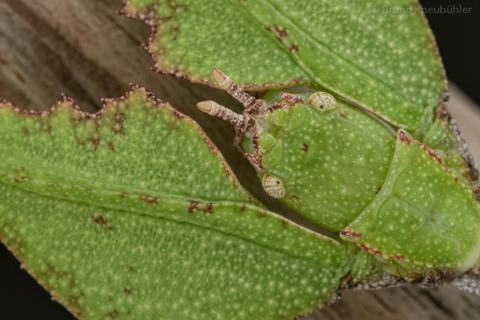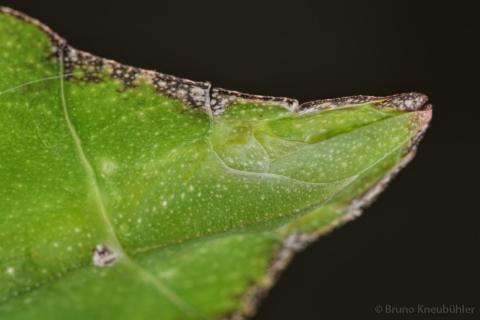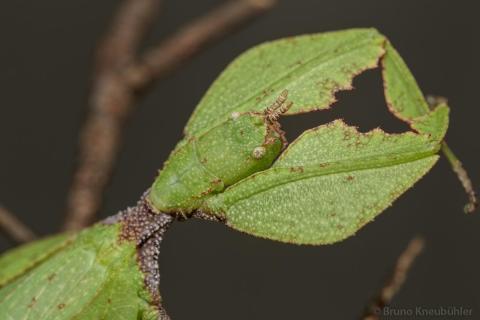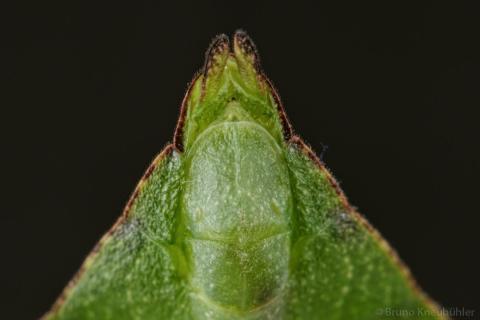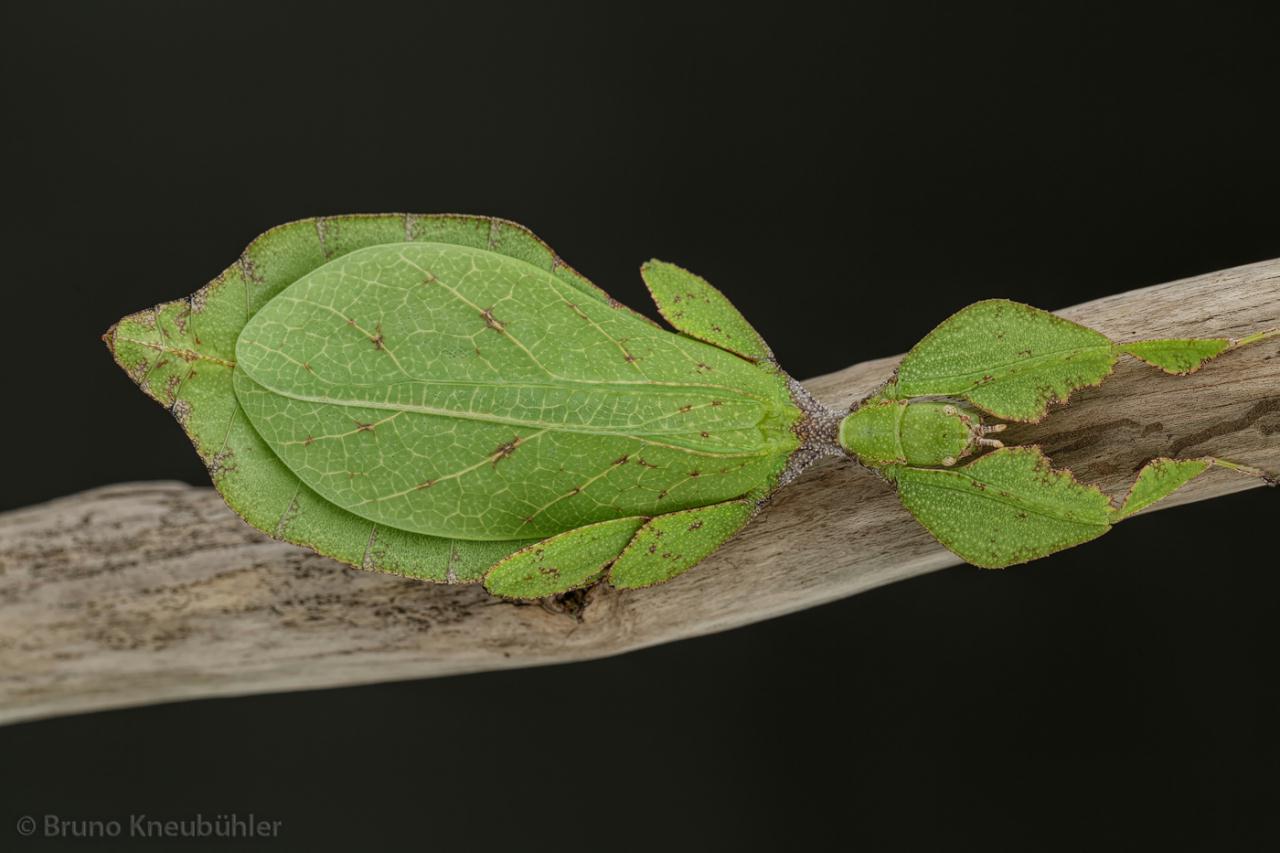
Genus
Species
Stock
CLP
728
Culture status
Unknown
Foodplants
Strawberry (Fragaria sp.)
Bramble (Rubus spp.)
Oak (Quercus robur)
Mango (Mangifera indica)
Breeding notes
(by Bruno Kneubuehler)
General Informations
- this culture is also know as Phyllium sp. "Singapore"
- provenience: Singapore
- F2 CB culture by Thierry Heitzmann (Philippines)
- further taxonomical informations ➤ phasmida.speciesfile.org
- this is a pure culture, and serious breeders are asked to avoid mixing this culture with similar populations from a different provenience
Females
- body length 8 - 9 cm
- green with dark brown dots and patches
- rather long hind-wings, compared to other Phyllium (Phyllium) species
Males
- body length 7 cm
- rather big
- green
Nymphs
- freshly hatched nymphs are dark brown with light greenish dots on the abdomen
- 14 mm
- on how to distinguish between male and female nymphs
Eggs
- 6 x 4 mm
- brown
- suface looks furry
Food Plants
- not all freshly hatched nymphs take to bramble (Rubus spp.) easily
- if freshly hatched nymphs refuse to feed on bramble at first, then offer them strawberry leaves
- once they feed well on strawberry leaves for about two weeks, you can change them to bramble
- bramble (Rubus spp.)
moderately well accepted by freshly hatched nymphs, well accepted by older nymphs and adults - natural food plant might be Sea Hibiscus (Talipariti tiliaceum) (info by Dmitry Telnov, Latvia)
- Mango (Mangifera indica) and oak (Quercus rubra) is also accepted (info by Dmitry Telnov, Latvia)
Breeding, Behaviour
- active mainly during the night, although one can also regularely see them feeding during the day
- both males and females quickly drop to the ground when being touched, usually they freeze up again after a few steps
- eggs just drop to the ground
- about 8 - 10 eggs per female and week
- incubation (damp vermiculite) about 3 - 4 months at 20 - 23 °C
- males will be adult after 5 - 6 months (at 20 - 24°C), females after 6 - 7 months
- as eggs of other Phyllium species, these eggs are also quite prone to get mouldy, and it is difficult to avoid this. Yet a thin mould layer does not affect the hatching ratio negatively
- nymphs hatch at day time, in the early morning hours
- a humidity of about 60 - 70 % seems to be good enough for the nymphs, keep them in an airy cage
- the Free-Standing-Setup is very much recommened for small nymphs
- keep the adults (especially the males) in arather humid cage (about 80% RH)
- one can spray them regularly with chlorine-free water, but allow the water to dry up before spraying again
- easy to breed
Basics of phasmids breeding
- keep only one species per cage, overpopulation is one of the main reasons for breeding failures
- keep nymphs seperate from the adults, mainly to protect them during the crucial moulting phases
- choose the cage big enough, when in doubt it is (usually) better to choose a cage too big than too small
- a ventilator often supports good breeding results, as it seems to increase activity and feeding
- provide enough light, but avoid direct sunlight (overheating)
- try to keep day time temperatures below 25°C
- a nocturnal fall of temperature is natural, and thus advantageous
- do not spray too much, phasmids are no fish ! The water should dry up before you spray again
- minimize disturbances (loud music, commotions, light at or during the night, opening up cages in the morning [often a moulting phase] ect.)
